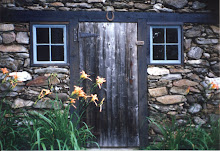Vanished Splendors
(chapter 28)
Drawing is a great school of truth and exactingness. It brings us closer to nature's most secret geometry, which painting doesn't always allow us to do, since more imagination, stage direction, and spectacle go into it. By contrast, drawing necessitates abstraction in some way, since it is about going beyond facial and bodily appearance and reaching their light.
It's a more austere and, perhaps, more mystical project. It entails reaching the flame of an incandescent blaze. With just a few lines the fire, despite its transience, may be stolen, captured, and grasped in its glimpsed-at splendor. I was able to do this in my portrait of poor Artaud doodled on a cafe table. By this I mean that the painter must have a spiritual approach, because fire is spirit and he himself is life. The painter's gaze contains spirituality, and his ability to attain it captures his model's essential nature, and deepest, most unsettling structure. Then a crossing occurs, a clairvoyance that Arthur Rimbaud wrote about.
Today, when my vision prevents me from drawing, I still have the blessing of painting. I see colors. This is a mysterious fact that Setsuko finds difficult to understand, although she witnesses it daily. I know when she gives me the wrong color, as a kind of transfiguration takes place, an alchemical process, and I know when a little bit more Rosso Pezzari or Egyptian blue is needed; I cannot see anymore, yet I see color combinations on a canvas.
A miracle.
____________________
Balthus (Balthasar Klossowski)
Vanishing Splendors
Ecco, 2001
translated from the French by
Benjamin Ivry







































